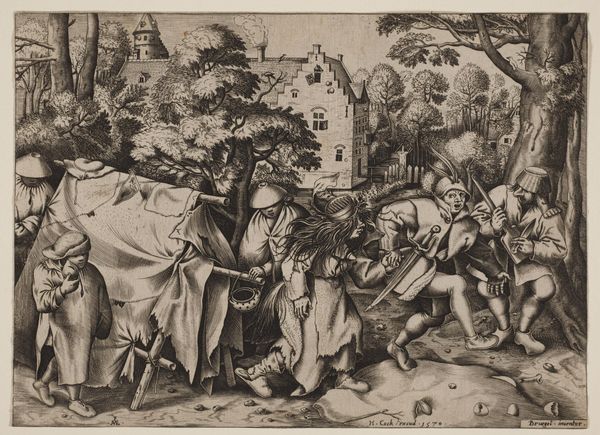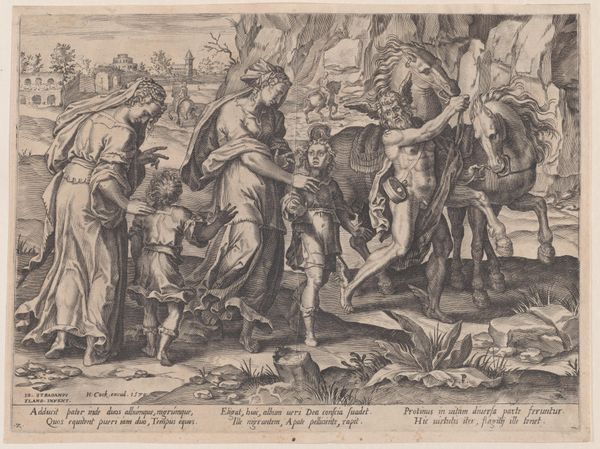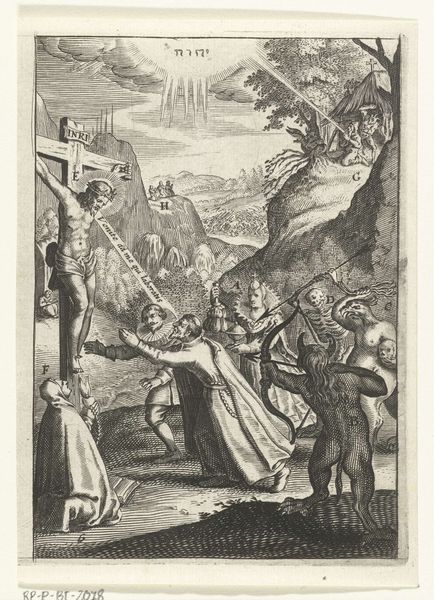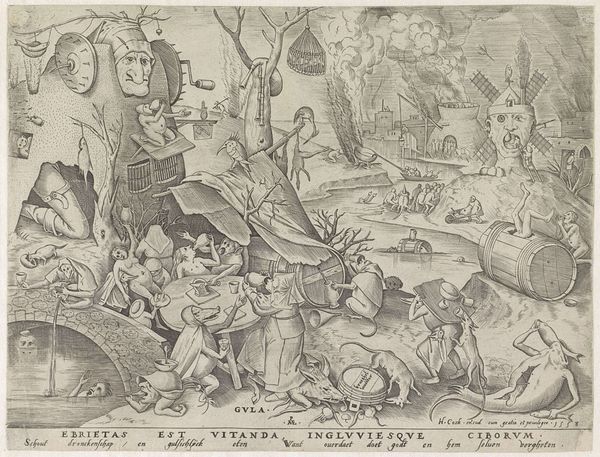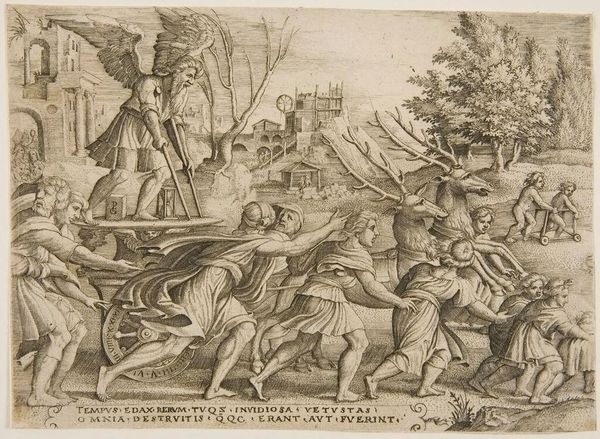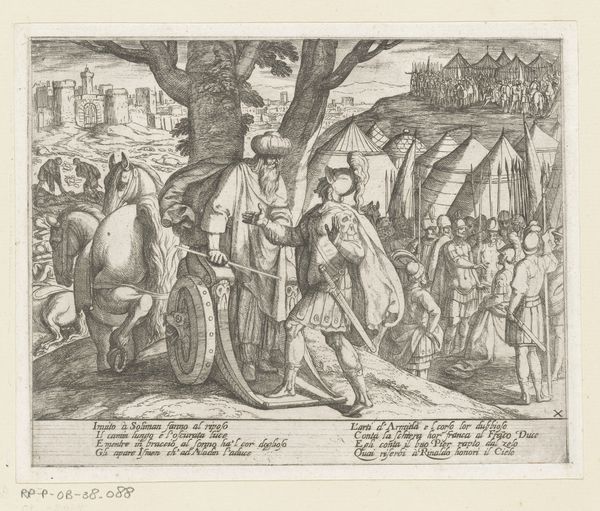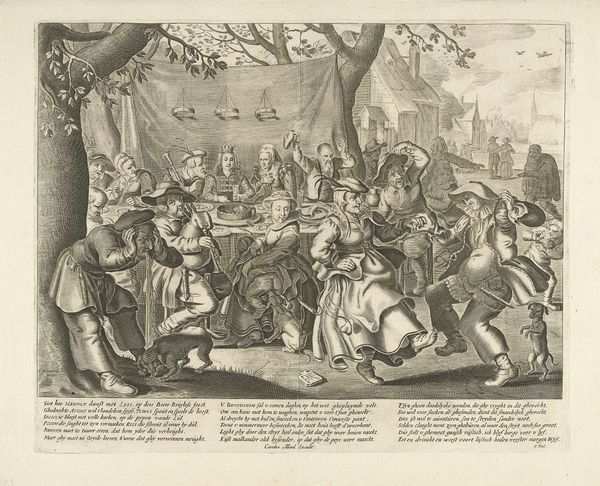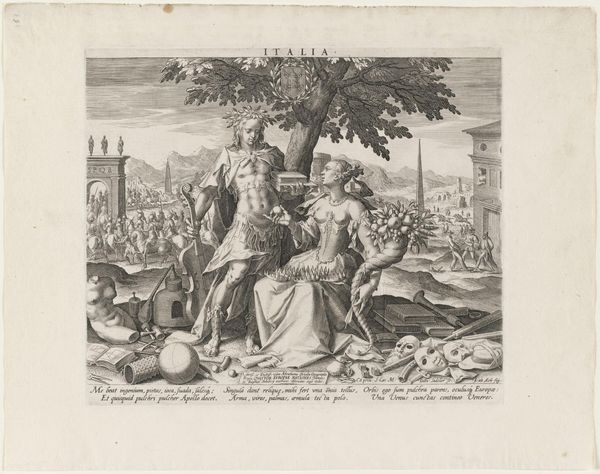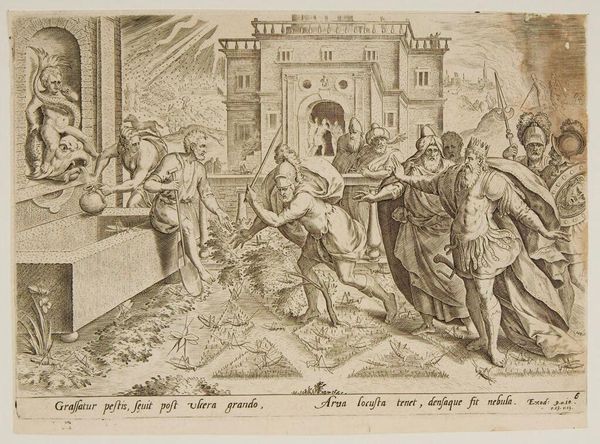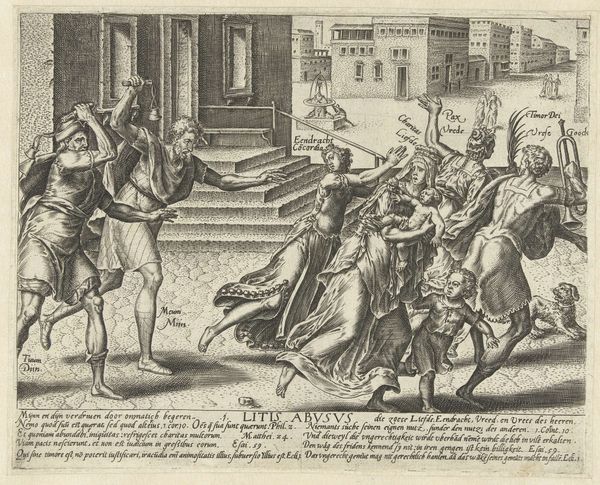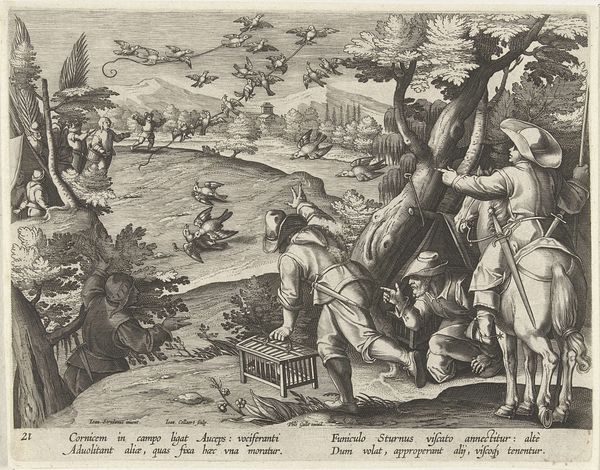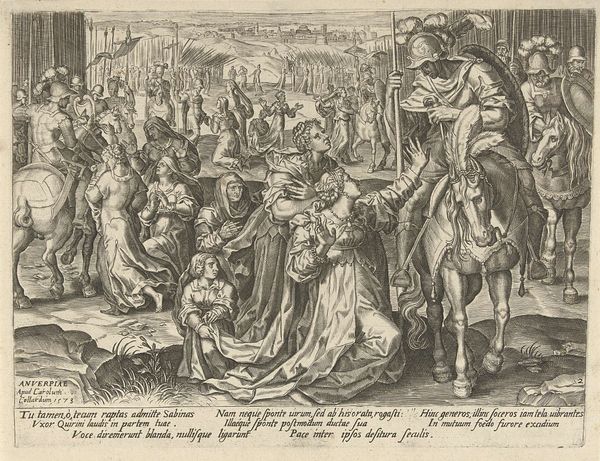
print, engraving
#
narrative-art
# print
#
landscape
#
mannerism
#
figuration
#
line
#
genre-painting
#
northern-renaissance
#
engraving
Dimensions: height 222 mm, width 290 mm
Copyright: Rijks Museum: Open Domain
Curator: Pieter van der Heyden created this engraving around 1570, and it’s currently held at the Rijksmuseum. It’s titled "Vuile bruid of de bruiloft van Mopsus en Nisa," which translates to "Dirty Bride, or the Wedding of Mopsus and Nisa." Editor: Well, it certainly has a disordered, almost frantic energy. The line work is incredibly detailed but creates a sense of unease, a lack of classical harmony. The distribution of tonal values makes it chaotic in a way. Curator: Disorder is certainly the point. The imagery alludes to the low-class weddings celebrated in 16th-century Netherland. Mopsus and Nisa are stock characters representing foolish lovers. The entire scene is rife with visual metaphors for poverty, stupidity, and bawdiness. Editor: Can you point out some examples of that symbolism? Curator: Absolutely. Notice the makeshift tent, patched together from rags. It symbolizes their destitution. The figures around them—their wedding guests, one assumes—appear dull-witted and ill-mannered, dressed in tattered clothing and silly hats. The overturned pots, strewn across the foreground, speak to lost fortunes. The owl perched above is the most compelling— Editor: --an obvious symbol of foolishness! Perched high and overlooking the unfolding drama below. This reinforces how those present in the composition would likely understand the figures depicted, and more broadly consider themes of satire. The placement is intentional and the tonal gradation to establish the shape— Curator: Right! It is a rather common visual symbol of foolishness in this era, but Pieter also carefully arranged his use of light and shadow here. Editor: What is quite compelling to me is how, despite this seeming chaos, the composition resolves into an inverted triangle—its apex resting on the amorous duo and working outward toward the architecture, or high point, and its foundation in a swamp, both framing and reinforcing social critiques with geometric tension. It speaks volumes to Netherlander ideas about social order and the family at the time. Curator: A vital reminder that images don't exist in isolation but are entangled within wider structures of perception and cultural values! Thanks. Editor: Agreed; it is crucial that one analyzes the composition and overall emotional tone!
Comments
No comments
Be the first to comment and join the conversation on the ultimate creative platform.
